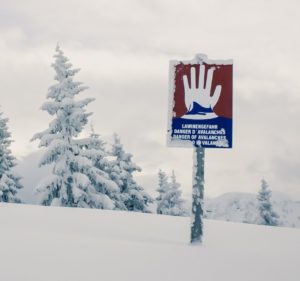
Reading Time: 3 minutes
The Slippery Slope of COVID-19- Navigating the Bear Market
Sadly, for many retirees, the slippery slope of retirement transition just got a lot more dangerous.
Unfortunately, as the world scrambles to deal with this pandemic medically, the economic fallout is also beginning to be felt. For those senior employees just a few short years away from retirement, it may be necessary to plan for an early exit. Most of us don’t work for companies making masks or vaccines and job security has become a real concern. While our thoughts and prayers are with patients, families, doctors, nurses and first responders, the medical crisis will certainly cause financial hardship for many. What we thought to be a walk in the park or a short hike has just become mountaineering. Retiring during a bear market or recession is something we can plan for, but it is quite different than planning to retire during a bull market.
We founded Intelligent Investing to minimize financial stress to maximize our clients’ lives, especially during these current stressful times. We combine world-class credentials and experience in both financial planning and investment management, along with over thirty different technology integrations to help our clients cope with their major life events.

Climbing Mount Everest successfully has been a goal of many people. Few have attempted it, and fewer still have done so successfully. Mt. Everest was first conquered by Sir Edmund Hillary and Nepalese Sherpa mountaineer Tenzig Norgay in 1953, and Hillary still features prominently on the New Zealand five-dollar bill. Even though Nepal issued a record 381 permits in 2019, last year’s climbing season had a limited number of good weather days, leading many people to set out at once when the skies cleared and the winds seemed calm. Unfortunately, this caused crowding, and at least 11 people died last May, even though most were experienced trekkers.
What caused those deaths, and what lessons can we apply to retirement and investing? There are many parallels between the climbers of Everest and retirees making a retirement transition. We will be covering additional parallels in future blogs, but to start, here’s the first one we observe.
The Descent Is Riskier Than the Ascent
One of the interesting things about Everest is that many deaths occur on the descent, not the ascent. In fact, depending on the years measured, over half of deaths are on the descent, and almost 20% occur to climbers who turn back.
Climbers spend their energy getting to the peak and are tired and less focused on the descent. Many die because they become careless once they reach the summit. After all, the goal is not just to climb to the top, but to make it down the mountain to be able to tell about it.
When it comes to careers and investing, many people have successfully climbed the corporate ladder and have a sizable nest egg. They faithfully contributed regularly to their retirement plan, or perhaps they were fortunate enough to have a pension plan. The natural compounding of their investments over their careers has produced a decent nest egg. Now they have reached the time to successfully spend down their nest egg in retirement or preserve it for the next generation.
Often, these successful executives and pre-retirees come to the realization that they aren’t sure what their next step should be as they perhaps planned more for their European cruise, than their actual retirement goals. When they step back or are forced to exit corporate America, they haven’t thought about how their nest egg will produce their retirement income and whether it will be enough. They haven’t thought about how expensive retirement can be, how many years they will be in retirement, and if their portfolio will be sufficient.
Successfully descending the other side of the retirement mountain and spending down our assets is often riskier than the accumulation phase of our lives. If we slip (go through a bear market or have an emergency need) while we are young, we can recoup the loss through our earning potential and our financial investments have more time to bounce back. In retirement, our income potential has fallen and our time horizon is shorter. The thought of running out of money while in retirement can be scary, and you don’t want to be forced to reclimb the mountain by getting another job, or worse going into debt.
Running out of money in retirement can be disastrous and affects our finances, our lifestyle, our health, and our loved ones. Many people work by choice in retirement, but working out of necessity or going into debt are not great options. The retirement transition is a slippery slope indeed.
Therefore, having a plan for both your ascent and descent is critical to success.
In our next blog, we will cover the next parallel between climbing Mount Everest and transitioning into Retirement.




